Hunting Tips, Questions, Stories & Discussion
Focusing on managing Texas wildlife habitat and natural resources for native and exotic wild game species, for this and future generation of hunters and outdoor enthusiasts.Thursday, August 6, 2009
Morning Report - July 31, 2009
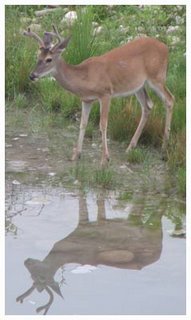 Well, it rained yesterday and was 67 degress at 2pm!!!! This morning it was still and foggy, the animals were out eating the green shoots that sprang up from the rain. We had a turkey convention below the house along the river. A large group of mothers and babies were being harassed by a group of teenage jakes. Whitetail, axis, and sika were seen, two fallow bucks were below the house. Well time to get to work on the roads!
Well, it rained yesterday and was 67 degress at 2pm!!!! This morning it was still and foggy, the animals were out eating the green shoots that sprang up from the rain. We had a turkey convention below the house along the river. A large group of mothers and babies were being harassed by a group of teenage jakes. Whitetail, axis, and sika were seen, two fallow bucks were below the house. Well time to get to work on the roads!Labels: axis deer hunting, escondido hunting ranch, south texas hunting ranch, texas whitetail deer
Thursday, July 9, 2009
Hunting Report: July 4, 2009
It was already close to the shooting light by the time I got into the blind. Today, I was equipped with a 10x44 scope mounted on a brand new .270 rifle and the targets were the feral hog and the illusive aoudad sheep. In the past year, I have been a frequent guest at Escondido Ranch and
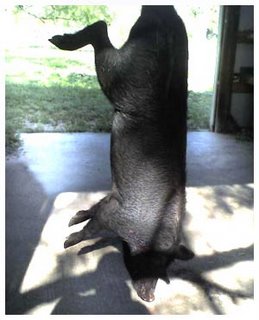 have shot a number of feral hogs. However, in all of my outings at the ranch, I have seen a group of young aoudad sheep only once, at over 200 yards and moving across a narrow opening. There are certainly ample aoudad on the ranch, including a number of trophy animals. A couple of the trophy size mounts are proudly displayed in the main house, but the weary animals continue to elude me.
have shot a number of feral hogs. However, in all of my outings at the ranch, I have seen a group of young aoudad sheep only once, at over 200 yards and moving across a narrow opening. There are certainly ample aoudad on the ranch, including a number of trophy animals. A couple of the trophy size mounts are proudly displayed in the main house, but the weary animals continue to elude me.I settled in for the morning hunt after practicing a few "air" shots with my rifle to make sure I was in a comfortable shooting position. Even before the feeder went off at 7 am, two whitetail does had made their way across the shooting lane from behind the blind towards the feeder. Both animals passed within 40 yards of me without so much as a second whiff or a cautionary pause, and then proceeded to feed on the green grass around the feeder. The does grazed effortlessly, knowing that they were not on a la carte this morning, and seemed to be oblivious to any accidental noises coming from the blind. A bit later another whitetail and a fallow doe joined the gathering, and proceeded to feed on both the green grass and the corn scattered around by the feeder. The fallow deer, a native of Europe, are also common at Escondido. The fallow bucks are crowned with a set of distinct horns resembling those of a moose, but on a smaller scale. The hides vary in color from pure white (as was this doe) to spotted reddish brown.
The fallow doe was much more alert than the whitetails. As an exotic, the fallow can be hunted year round in Texas. After 15 minutes of nervous feeding, the fallow zigzagged its way toward woods' edge and disappeared in the shadows. Meanwhile the whitetails continued to graze so carefree that one of them approached me to within meager 20 yards (a bow hunters dream).
As the sun ascended in the sky engulfing the tree tops in a brilliant light, I glanced at my watch. Remembering that I promised my wife to be back at the main house by 9am to help with the kids, who came with us for this 4th of July weekend, I decided to call it quits for the morning and started to pack up.
Once packed, with the gun unloaded, I was literally pushing open the door, when all of a sudden, a black feral hog appeared from the brush and trotted directly towards my hideaway. My heart started to pound. I eased the backpack to the floor, felt around my chest pocket for .270 round (130 grain), placed the bullet into the chamber and eased the bolt into the position. Thirty yards out, the hog stopped, lifted up its snout and sniffed the air with authority, grunting a couple of
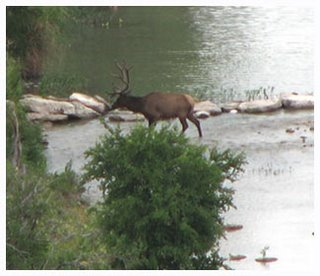 times in the process. Meanwhile, the three whitetail does stopped feeding and intently looked at the hog.
times in the process. Meanwhile, the three whitetail does stopped feeding and intently looked at the hog.When I finally locked the bolt into place, the inevitable click of the mechanism must have sounded like a ringing bell to the nearby hog, which looked in my direction and quickly turned sideways and began to pick up speed. The rest was a blur... I raised my rifle, somehow found the hog in the scope, instinctively aimed behind the shoulder while thinking that he was too close and does not need to be lead, removed the safety and pulled the trigger.
The shot rang out and through the dissipating cloud of gun smoke, I could see the hog fall on its back and after a few leg twitches rolled over on its side and came to a rest. I jammed another round in the chamber, pushed open the door and quickly walked towards the still hog. It was dead. The bullet entered at a slight angle behind the left shoulder and exited a bit forward on the other side. The projectile slid effortlessly through the heart leaving small entry and exit wounds. The hog never suffered.
It all happened so fast that I did not even have a chance to fully enjoy that fleeting moment when anticipation meets with preparation. Only after the deed was done, did I look down at my hands and they were still shaking from the adrenaline rush. I love it! At that point my cell phone began to vibrate. It was my bow hunting partner Tony, who only two weeks prior harvested another hog with a bow after stalking up on him to within 30 yards. He was checking in about the shot he had heard. Congratulations followed.
After I loaded the hog into the back of the truck, we met up at the cleaning station in the valley below where we proceeded to wager on the weight of the hog. Tony, the country dude that he is,
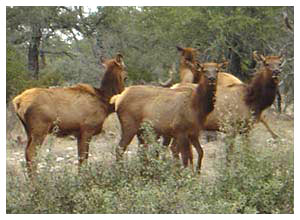 won the bet after estimating the weight at 100 lbs. The hog actually weighed in at 102 lbs. I am glad we did’t have money on it.
won the bet after estimating the weight at 100 lbs. The hog actually weighed in at 102 lbs. I am glad we did’t have money on it.The ranch manager offered to dress the hog and I jumped on Tony's 4-wheeler and headed back to the main house which is perched on a cliff overlooking the valley and the river. On the way back up the winding dirt roads, I ran across a herd of six bull elk. All of them in velvet were displaying their wide tall crowns which will be in high demand later in the year. Elk, once native to Texas, were pushed north by hunting and the encroachment of human habitat. Now, a herd of over thirty animals thrive at Escondido Ranch. The largest bull elk's 6x6 rack was noticeably taller than the rest of the bulls. It will make a nice trophy later this year.
I was only a few clicks form the main house when a herd of cow elk appeared standing along the side of the road. Eight cows were accompanied by a gorgeous chocolate colored Sika buck (a native of Japan) with a full 8-point spread and an accompanying doe of the same color. The noise of the 4-wheeler spooked the entire group and they trotted away towards the safety of the brush. About the same time, my cell began to vibrate again and it was my wife calling.
It was time for me to get back to the house and help with the kids if I harbored any further hope of any more hunting during this 4th of July visit to Escondido Ranch.
Labels: south texas hunting ranch, texas elk hunt, texas feral boar hunts, texas feral hog hunts
Tuesday, July 7, 2009
Hunting Report: June 20, 2009
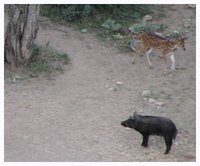 second time with my Mathews 'Reezen' bow I had received from my father-in-law. I had shot the bow hundreds of times at still and 3-D targets but this was my first live stalk and proved to be a successful one.
second time with my Mathews 'Reezen' bow I had received from my father-in-law. I had shot the bow hundreds of times at still and 3-D targets but this was my first live stalk and proved to be a successful one.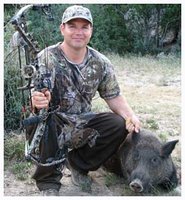
We knew we had a good chance at getting at least one of them because we had two things definitely in our favor. The first being that the hogs were hungry and were preoccupied with trying to get into the feeding area and second, the wind was blowing due south, straight into our faces. This allowed us to move quietly through the mesquite filled brush and approach the animals to within 40 yards. With every step my heart was pounding faster and faster. I knew this was going to be my first attempt at shooting an animal with my new bow and I wanted to make a good shot because if I missed I would never hear the end of it, especially from my rifle slinging, hunting buddy Gary. I took a couple of more big steps to get to within 30 yards of my target. I steadied my position, drew the bow to breakover position, zeroed in on my target and let it fly... The next sound I heard was the squealing of a hog that was paralyzed with the shot. I did it!! I successfully stalked and killed my first animal with my new weapon of choice. Congratulations followed from my good buddy Cody and all of our family members. What an adrenaline rush!!!! Whether you are a rifle hunter or bow hunter like myself, the folks at Escondido Ranch can accommodate all or your hunting needs. Thanks for reading and God bless.
Labels: bow hunting, feral hog hunting, south texas hunting ranch
Monday, June 22, 2009
Why don't you need a license for exotic game hunting in Texas?
Basically as far as the Texas Parks and Wildlife Department
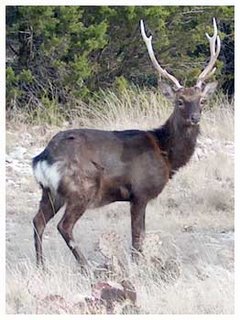 is concerned, management with regards hunting of these exotics is based on the decision of the management of the exotic game hunting ranch. Game managers have to determine what is a reasonable number of males and females of each species to allow to be harvested each year. Incorrect management of the herds can result in low numbers for years to come or overcrowding of the grazing ranges within the given area. Most game managers are very good at what they do, ensuring that mature males and females in the right numbers are maintained to keep the herds at the appropriate levels for the hunters as well as the food supply.
is concerned, management with regards hunting of these exotics is based on the decision of the management of the exotic game hunting ranch. Game managers have to determine what is a reasonable number of males and females of each species to allow to be harvested each year. Incorrect management of the herds can result in low numbers for years to come or overcrowding of the grazing ranges within the given area. Most game managers are very good at what they do, ensuring that mature males and females in the right numbers are maintained to keep the herds at the appropriate levels for the hunters as well as the food supply.What happens to wounded animals in exotic game hunting situations that don't result in a kill?
All the guides and staff at exotic game hunting ranches are conservationists and managers by job description. As such they are responsible for ensuring, whenever possible, that all wounded animals are tracked down and killed as quickly as can occur. In reality there are very few seriously wounded animals that are not located and killed since they will leave a considerable trail for an experienced tracker.
Animals that are just grazed or have a slight flesh wound are often very quick to recover on their own. Of course guides watch the condition of the animals when they come to feed and any injured animals can be harvested as required. Ensuring that all hunters on the ranch work with guides also helps to cut down on any injured animals being left behind on the hunt.
Where can I go to get the meat properly processed?
Not all exotic game hunting ranches are going to provide field dressing and quartering of your kill, but this is a service offered by the staff at Escondido Ranch. After the meat is quartered and packed, you then have the option to take it to a wild meat processor in your area for further processing. Many hunters also butcher the animal themselves, there are several guides and charts available online that are simple to follow and give you the basic cuts. Making hamburger, sausage or even jerky with the meat is a simple and delicious way to make short work of butchering as well.
Labels: exotic deer hunts, south texas hunting ranch, texas exotic hunting ranch, texas hunting season
Wednesday, February 4, 2009
Is there any time that wild game hunting isn't allowed in Texas?
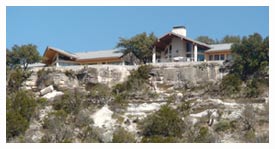 hunting year round.
hunting year round.Weather in Texas is seasonably warm all year round so even January and February hunting can be done in temperatures of 50 degrees plus. This makes a nice change for hunters from other states that are dealing with below freezing temperatures.
How can I tell if there are wild game hunting times open at Escondido Ranch?
The website offers an interactive type of calendar system that is updated to clearly show the times that are not already booked on the ranch.
If you aren't comfortable using the website to check for available wild game hunting times, contact the office by phone or email to book your hunting block.
Labels: escondido hunting ranch, guided hunts, south texas hunting ranch, texas hunting ranches
Tuesday, January 20, 2009
What makes Escondido a unique Texas exotic hunting ranch?
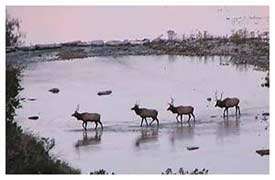 Besides the historical roots of the ranch, Escondido is a unique Texas exotic hunting ranch that has been in business since 1980. This means that the herds have been monitored and managed for optimum trophy animals as well as herd numbers and health for almost 30 years.
Besides the historical roots of the ranch, Escondido is a unique Texas exotic hunting ranch that has been in business since 1980. This means that the herds have been monitored and managed for optimum trophy animals as well as herd numbers and health for almost 30 years.While other Texas exotic hunting ranches may have over hunted their land area, the staff at Escondido has used a balanced management approach right from the start. Healthy stock is the norm at the ranch, leading to good production from does as well as ensuring a good hunt for those that want to hunt both exotics and native species. The added plus is the river running through the almost 2 square mile area, ensuring the best possible living conditions for a wide variety of native and non-native species.
What all comes with the cost of the hunt?
Every Texas exotic hunting ranch has different pricing options depending on the services that they offer. Escondido Ranch offers 15 different hunting options ranging from seasonal hunts for Whitetail does and bucks, bull Elk and Rio Grande Turkeys through to year round hunts for cow Elk, Aoudad sheep; Axis, Fallow and Sika deer, Russian boars and feral hogs as well as Blackbuck Antelope. Each species is individually priced for the hunt, with trophy bucks for Whitetail priced according to their B/C score.
In addition to the animal that they successfully hunt, each hunter also receives guided support for hunting including hunting tips and advice from a professional guide. The guides will also clean and quarter the animals and prepare them for packing into the hunter's coolers or ice chest for transport. Hunters can use the main lodge area and can also arrange for meals and accommodations through Escondido Ranch.
Where did the exotic species come from on Texas exotic hunting ranches?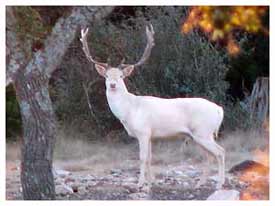
All the exotic species have been imported from their native countries, most several generations ago. Some of the species were imported in the early 1900's and then spread into wild populations that were reclaimed and managed on Texas exotic hunting ranches, typically in the central and southern parts of the state. Usually the importing was done by avid hunters and landowners that noticed the resemblance and similarity between the climate of south central Texas and the specie's native range.
In some cases exotic species are still imported from other ranches and states to prevent inbreeding and keep the genetic balance within the herds. Some of the wild native species such as the Whitetail deer, Rio Grande Turkeys and the feral hogs may naturally move in and out of the ranch based on natural movement and seasonal patterns.
Animals on Texas exotic hunting ranches are allowed to live as wild and natural as possible, but they are also fed on a regular basis and treated for any health conditions that arise. The goal of staff is to maintain a healthy, viable but wild herd that provides hunters with a unique, challenging and very out of the ordinary hunting experience.
Labels: south texas hunting ranch, texas hillcountry deer hunting, texas hunting ranches, wild game hunting
Wednesday, December 31, 2008
What type of hunting can I expect at Escondido Ranch?
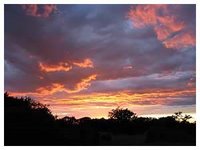 While many Texas hunting ranch properties have hunters traveling for hours just to get to location for the hunt, Escondido offers everything all within a convenient two mile radius. Hunts are done from blinds, meaning that you won't have to worry about trekking for hours only to find nothing you want to shoot.
While many Texas hunting ranch properties have hunters traveling for hours just to get to location for the hunt, Escondido offers everything all within a convenient two mile radius. Hunts are done from blinds, meaning that you won't have to worry about trekking for hours only to find nothing you want to shoot.The blinds are placed along game trails or close to feeders, virtually ensuring you will have a shot at just what you are looking for. Professional guides will help in locating game as well as preparing game for travel. Bring an ice chest, with a success rate of over 90% at this Texas hunting ranch you will need one to bring home the trophy results of your hunt.
For early spring, late fall and winter hunts you will need to dress in layers as the temperature is often around freezing in the morning hours but then climbs into the 60's or even 70's in the afternoon. Late spring, early fall and summer hunts will have warm weather, even night temperatures will be in the 70's and 80's or even higher on most days.
Labels: exotic game hunts, south texas hunting ranch, texas hillcountry deer hunting
Archives
December 2008 January 2009 February 2009 April 2009 May 2009 June 2009 July 2009 August 2009 September 2009 November 2009 December 2009 January 2010 February 2010 March 2010 April 2010
Subscribe to Posts [Atom]
